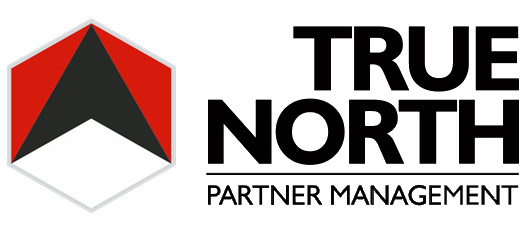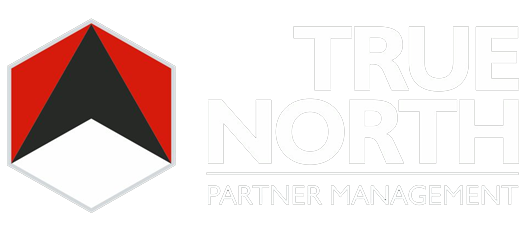The following post originally appeared on Forbes | Feb 12, 2014
Walt Disney Studios released the short film Paul Bunyan in 1958, bringing to life their translation of the eponymous French Canadian folk lore that originated in tales told during the Papineau Rebellion of 1837. The film perpetuated the legend of the giant lumber jack, and up to that point, there were none so capable of felling trees as Paul and his sidekick, Babe the Blue Ox. Closely mirroring American culture at the time, Walt Disney celebrated attributes such as strength, determination, stamina and technique as being Paul’s prized tools, which he had spent a lifetime honing. But, in Bunyan’s acutely focused pursuits and somewhat sheltered “career,” he missed the development of his nemesis – the chainsaw. And in a heated challenge with Joe Muffaw, a chainsaw-toting salesman, he was bested by a man that before that day could never have shared the stage with such a legend. Times changed. Paul did not. And his methods, his ways, and ultimately, he, became extinct.
At 41 years of age, while the law firm of Heenan Blaikie LLP (HB) is not terribly old, it is another Canadian legend that failed to change with the times, and as a result, is suffering Bunyan’s same fate. With over 500 attorneys (at their peak), 8 domestic offices, 2 international offices, a robust client list and former Canadian Prime Ministers among their ranks, HB is a midsize-to-large firm that did many things right over the years and earned a seat at Canada’s legal round table. Nevertheless, an intense economic climate and increasingly savvy clients exposed the blinders that much of their management had been wearing, and ultimately coerced the partnership to begin winding things down late last week.
DLA Piper showed up to consider acquisition options, but with Andy Rooney whispering in their ears – “It’s not worth buying an entire pig just to get a little sausage” – they’ve decided to pass. Interestingly, much of the media surrounding the unfortunate demise has charged it with leaving the legal community aghast. While Canada is a different country, at this stage of the legal market’s transformation, it isn’t so far from the US that news of a large failed firm should be snapping any necks. Further, there seems to be significant debate over just why the firm reached this position in the first place. Fortunately, the (Toronto) Star’s interview with named partner Roy Heenan settled the debate – it was blinding romanticism.
In the words of Heenan’s interviewer, Sandra Contenta, “…Heenan, the firm’s chairman from 1973 to 2012, says the real problem is the loss of trust, the firm’s founding ingredient. He describes a firm torn over the past year by infighting and clashing visions, where individuals and whole offices were accused of not pulling their weight, and disputes raged over practices that should be cut.” While Heenan’s lamentation of eroding trust in the firm may seem almost cinematic, like a coming of age story, it not only displays an alarming ignorance to the state of today’s market, but is also evidence that profession-based absolutists still pace the floors of legal executive committees and boards, alike.
Heenan goes on to say, “It’s very hard to see it end as a result of squabbles, because I really think that’s what brought the firm down, rather than the financial situation. Once you start pointing fingers at this person or that person and this office or that office, that leads to discontent and discontent is what leads to departures.” This is tantamount to blaming the Titanic’s fatalities on squabbles over who gets a seat in the life boats; he is focusing on the wrong thing. While there is good reason for him to mention financials – though the firm cleared $75M in profits last year, this still represented a 15% decrease from the previous year, which is enough to unnerve a stable firm, and is certainly enough to spook the herd in a shaky one – profit loss is an effect, an outcome, and not a true cause. The more desensitized UK and US onlookers already know this. So we dig deeper…
Glaringly obvious, and of highest consequence, is the lack of exploration into why fingers were being pointed in the first place. The problem lies not in the pointing of fingers, or the squabbling for that matter, but in the firm’s support of the under-performing partners and practices that were being pointed at.
Heenan’s take on the firm’s founding culture is no doubt accurate: they started things with a hand shake. This says a lot about the primary psychology that fertilized the firm, and perhaps provides an explanation as to the origination of Heenan’s current mindset. In the 1970’s and earlier, such an arrangement was far from unorthodox. And where small partnerships are concerned, this is often wholly sufficient, if not ideal. He also talks of making it through tough times by sticking together, which, again, no doubt came to bear many times during the firm’s 40+ year run. But today his romantic view of how things were, and maybe even should be, quite succinctly fails to factor in modern day, large group realities such as free-riding, shirking, grabbing and leaving, satisficing, social loafing, diluted collegial monitoring and adjustment, cultural heterogeneity, limited liability, rapid financialization, and the overwhelming availability of market and competitor information, among other things.
The article goes on to say, “Some managers began insisting on what Heenan describes as a bean-counting approach. They looked at hours worked and profit made. By that measure, the Paris office and others came under fire.” What Heenan euphemistically calls a “bean-counting approach,” is otherwise known as a sound business approach, as any accountant, economist or business strategist would agree.
The infighting between those that simply want to run the firm like a family business, and those that want to run it like a publicly held business, is far from original. The latter takes significant knowhow and work. And assuming that profits are healthy enough to keep producers in their seats, it is a heck of a lot easier to avoid, rather than broach, the ugly subjects of underperformance, ineptitude and inadequacy within the firm. Further, fodder such as who is worth what, the subjective value of various functions, and the effective measurement of individual contribution are all debates that have plagued firms and corporate America alike for decades. This goes back to the dawn of group living, and as groups grow, so does the potential for calamity where consensus hasn’t been established.
It is worth mentioning that while Roy Heenan has thus far been the focus of my article, he was certainly not the lone captain at the helm. Also, a quick scan of his bio shows that he was nothing less than a truly exceptional lawyer and a staple in the Canadian legal community. In his defense, I am confident that he did everything in his power to save what would have been his legacy. But, changing the primary culture of a firm that derives from, and has been supported by, the mindset of an entire industry for decades is a challenge that can buckle even the most capable. Likewise, he isn’t the first law firm chairman to have taken on their role without proper and formal business training.
With that being said, HB brings to light one of BigLaw’s most profound issues at the moment: a desperate attempt to continue supporting groups of attorneys who, in relation to the true bulls of their firms, (rainmakers, brilliant specialists or intensely effective client managers) are not only charging clients more than they are worth, but are also working less than they should and effectively appropriating rent from their firms in the process. In any other industry, if one expects to make $1M, or $2M, or even just $500K a year, they had better earn it, lest the rug be pulled out from underneath them. Unfortunately, the prevailing BigLaw culture is still suffering a population of grinding partners without books, who, while performing only marginally better than a 10th year associate, expect and receive economic equality.
Mind you, this is not an attack on attorneys – individually or on the whole. Further, I am not singling out the (singularly) billing partner; many are quite valuable, indeed. This is, however, an attack on the lingering remnants of a professionally-driven, honor-based culture that, sadly, in all but a handful of firms, just doesn’t cut it anymore. The golden goose has been drawn and tethered, and is now being beaten against a wall to – let’s not mince words – support a portion of the population that no longer deserves a golden egg. Though fleecing entitlement is not the only cancer that major firms face, it is certainly one that will bag more fatalities before the industry has shaken itself onto more stable footing.
Where HB is concerned, there should not have been any squabbling at all. Management should have been more concerned with measuring and stabilizing the firm’s finances and working population rather than with wishing for, and eventually, lamenting, partner loyalty. Failing to do so in such a grossly competitive market is the height of irresponsibility. The gap between the mindsets of the partnership and management is but another example of the age old myopia and lack of executive prowess that has given law firm leadership a bad name. Thankfully, this is changing. There are leaders in the market today that are amazingly sophisticated, wield significant horsepower and have, for lack of a better term, cojones. But until we have seen a full-blown exorcism of this “law firms are not really businesses” attitude, more headstones will be littering the BigLaw landscape.



